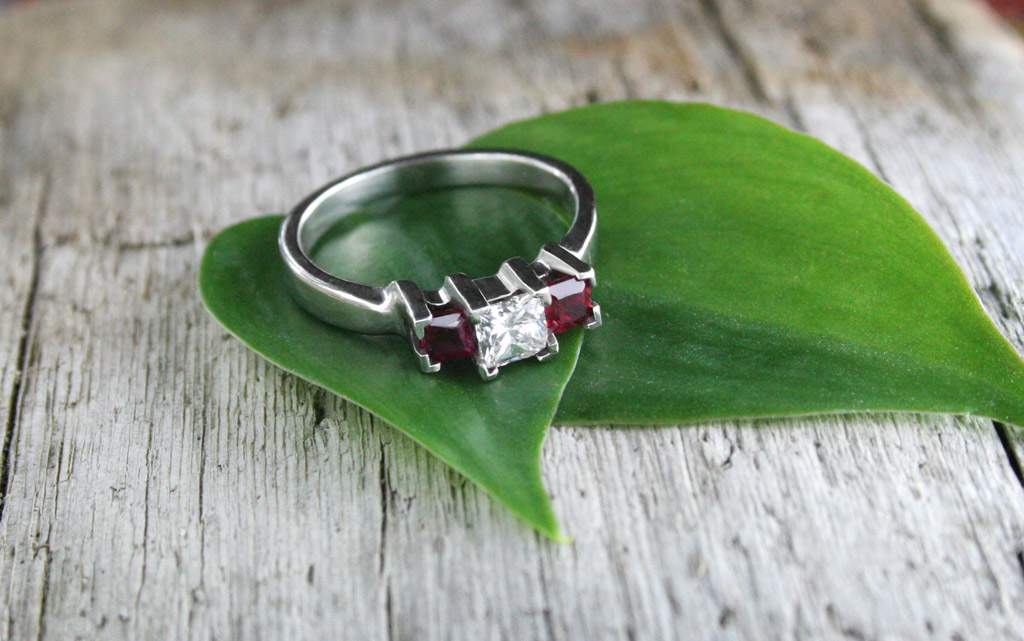Hi…I do jewelry photography and use photoshop to edit the shots and
make them ready for use. You should be fine with photoshop
elements…you don’t need all the fancy tools in photoshop proper to
do your editing. What I do is pretty complex because I actually
remove the background and replace it with a gradient and add a
shadow (you can see examples of my work by going here:
http://tinyurl.com/29npgkh
and click on the pictures to the right)
But here’s a few tips…use a light tent…you can get an
inexpensive one on ebay for about $15-20. This helps diffuse the
light so you don’t get as many hot spots. Great for metals, not so
great for gems where you want sparkle.
if you’re using a digital camera, which I assume you are:
-
use your macro or supermacro settings (if you have them) to take
close up shots. This lets you get very close to the piece and get a
detailed shot.
-
use a tripod for stability
-
if your camera has a remote, then use that, otherwise, use the
timer setting so that the camera stops shaking before it shots the
jewelry. Close up shots are hard to keep in focus otherwise.
-
Play with the White Balance settings and presets to get the best
results
-
it’s often good to raise the brightness/exposure if you can to
between +0.7-1.3 depending on your lighting.
Lighting:
If you cannot afford professional photo lights, take a trip to either
the nearest walmart, lowes or home depot. Buy 3 of the of the highest
wattage energy saving DAYLIGHT bulbs…I think they come in 23-26
watt max. Get three metallic reflector domes to hold them. Use these
to light your jewelry. The Daylight bulbs have a bluer color to them
more like outdoor light, so that it reduces the yellow tinge with is
a big problem when shooting silver.
GO to http://www.tabletopstudio.com/ and read up on product
photography, incl. how to set up your lighting.
Photoshop:
Often, even if you’ve set your white balance, you may find you still
have a yellow tinge on silver. You can go in under hue/saturation
(probably under adjust), and play with those settings. In photoshop
proper, you can select individual colors to increase or reduce
saturation or lighten and darken them. I usually reduce my yellows
and lighten them.
note: if you are photographing something with yellow in it, like
citrine, you have to select what is colored and then choose it’s
inverse, then reduce the yellow, otherwise, you will loose all your
color. This also goes for greens as they will go toward blue if you
reduce the yellows.
In Photoshop, under adjust, there is a menu item called Variations.
If you have it or something similar in Elements, you can get a visual
chart of how the image will look if you increase or reduce the colors
in dif. ways.
Otherwise, you will want to get familiar with brightness and
contrast.
A useful filter, assuming it is in Elements is Unsharp Mask. This
will be under Sharpen, and will help you sharpen up blurry
areas…but don’t overuse it or your images will get grainy.
Speaking of sharpness, when you reduce an image in size, choose
bicubic sharpen in the menu as reducing the image usually blurs it
slightly. You may also need to do an unsharp mask or a sharpen of
some kind.
As to Scanning, there are advantages and disadvantages…advantages
incl. more accurate coloring and less color adjustment. There are
some stones, like the intense cirrilian blue chrysocolla I have from
Arizona, that freak my camera out and it just won’t catch the color
on it…the shade just won’t come out right, but scanning it, it
comes out correctly. Also, you can control size. If you want to show
it 2x actual size, then set your scanner to 200% and 72 dpi
resolution.
You can use the same photoshop techniques on scanned images as well.
A disadvantage with scanning is that on bright silver, you get
flares where the light flashes off the metal…these show up often as
bright yellow spikes or spots flashing out from the silver.
NEVER EVER PHOTOGRAPH OR SCAN silver jewelry or light colored
jewelry on a black background! it screws up the auto-contrast
settings and washes out your details!!!
Hope this helps…like I said, it’s kind of complicated, and I’m not
even going to try to explain how I remove the backgrounds and such
because you need to learn the basics first. My techniques are more
geared toward silver, so I’m not surer how much of the color
correcting you will have to do with resins, but it all uses the same
basic tools.
Jeanne
jeannius.com
